
By Karen Rubin, Travel Features Syndicate, goingplacesfarandnear.com
On my last day in Paris (I have cleverly booked an evening flight from Charles De Gaulle airport), I just want to lose myself in Montmartre. Perched high above Paris as if its own world, Montmartre is the place of legendary cabarets like Moulin Rouge that so scandalized Parisian society, as well as artists and cultural mavericks and renegades but also (incongruously) Sacre-Coeur, the spectacular basilica that dominates the skyline.

Perched on the Butte Montmartre, you can hike up the steps or take a funicular from Place Saint-Pierre, from the little public garden ‘Square Louise Michel’ (where there is also a delightful carousel).
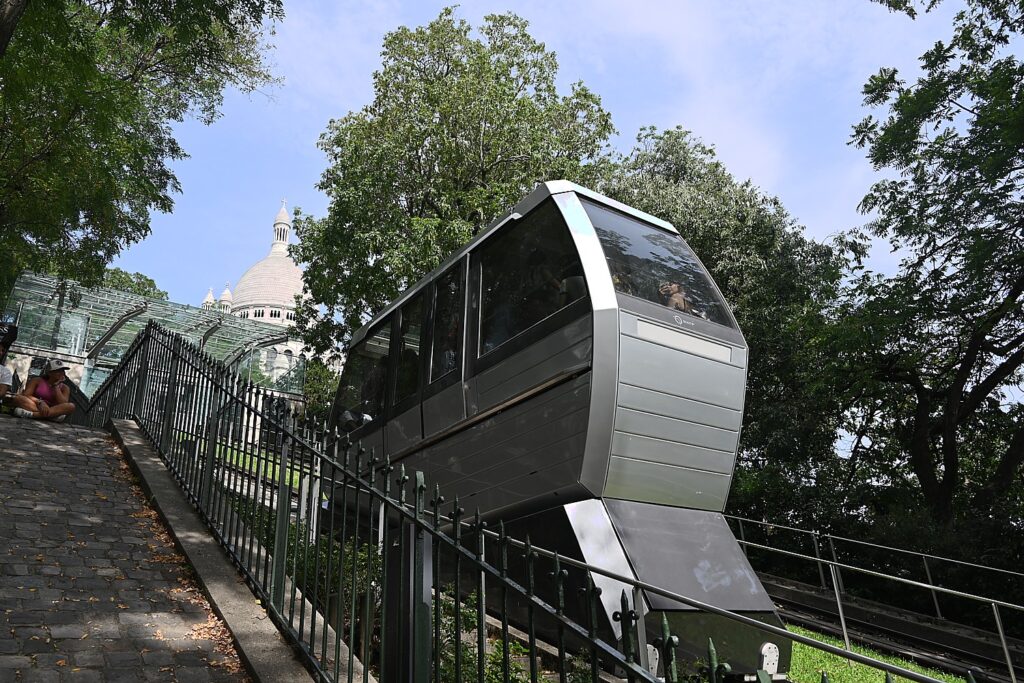
Picasso, Modigliani, Miro and before them Manet, Toulouse-Lautrec, Géricault, Renoir and Van Gogh, were among the painters who made Montmartre their home (because being well outside of downtown Paris, it was cheap, then), met up in cafes and worked in the many artists’ studios there.
Visitors come to take in that bohemian energy, that bon vivant, creativity, joie de vivre and romance.
Because of all the romance attached to Montmartre, it can be over-the-top touristy (though the tourism office insists this is still a neighborhood), but the true treasure here – and one of the highlights of my visit to Paris – is the Musee Montmartre, where you can really get a sense of that free culture, and see firsthand how the artists lived, what the Moulin Rouge and the scandalous can can.
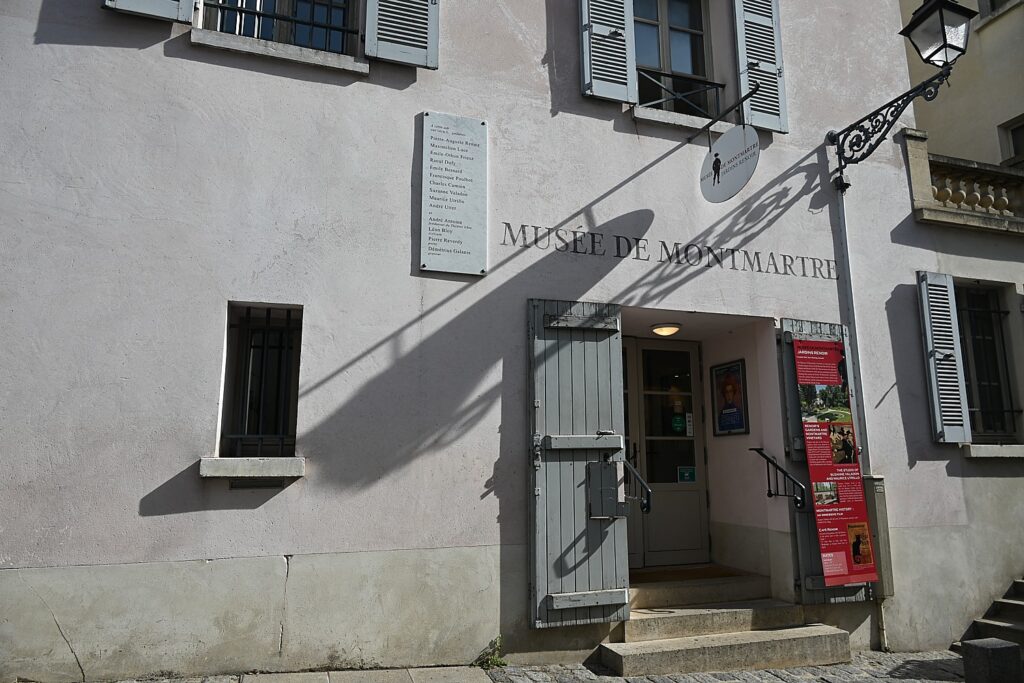
Amazingly, the Musee de Montmartre is in an unassuming house on a quiet cobblestone street only a few steps away from the frantic bustle surrounding Sacre-Coeur and the Place du Tertre where there is a hodgepodge of cafes and artists at their easels,

The Musee de Montmartre was created in 1960 in one of the oldest buildings on the Butte, built in the 17th century: La Maison du Bel Air. Surrounded by gardens, it was a place that would have been inhabited by artists including Auguste Renoir, Émile Bernard, Raoul Dufy, Charles Camoin, Suzanne Valadon and Maurice Utrillo,
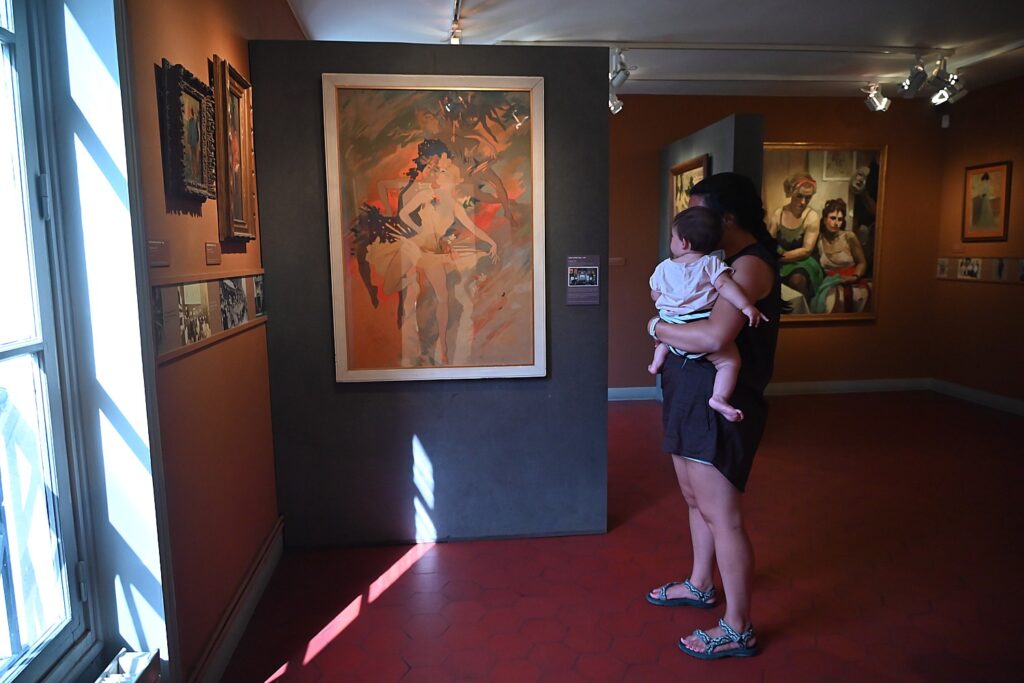
Here, you really feel the spirit of those artists, musicians, writers and cultural impresarios and entrepreneurs who made their community here – helped along by historic photos, video, recordings, sensational posters, documents and artifacts, and superb commentary.
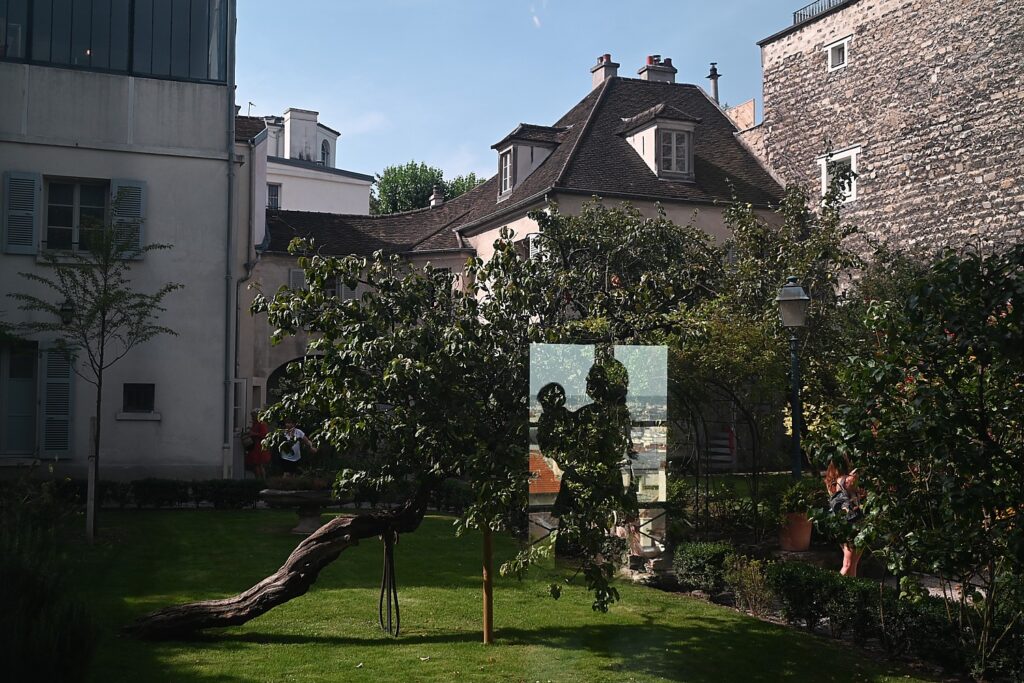
In the Chat Noir room, you hear piano music and singing; in a room devoted to the Moulin Rouge, you can see a video of French can can from the 1960 movie, “Can-Can” and see early photo portraits of can-can dancers; in another room, you get to see photos of important artists, like Toulouse-Lautrec at their easel.

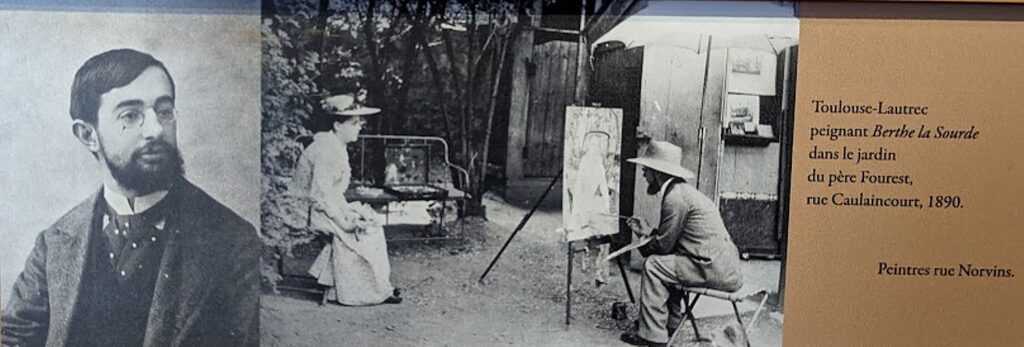
You get to visit the re-created atelier-apartment of artist Suzanne Valadon, who with her son Maurice Utrillo and André Utter settled in this apartment in 1912. Designer Huberty Le Gall, who worked with other renowned institutions, recreated the atelier-apartment faithfully based on letters, writings, historic photographs and paintings.

Here you really feel the presence of the artists. It is recreated to convey the character of the “infernal trio” – a frying pan, the recreated studio, the bedroom walls of Utrillo (an artist in his own right) still with its original paneling and wire on the windows.
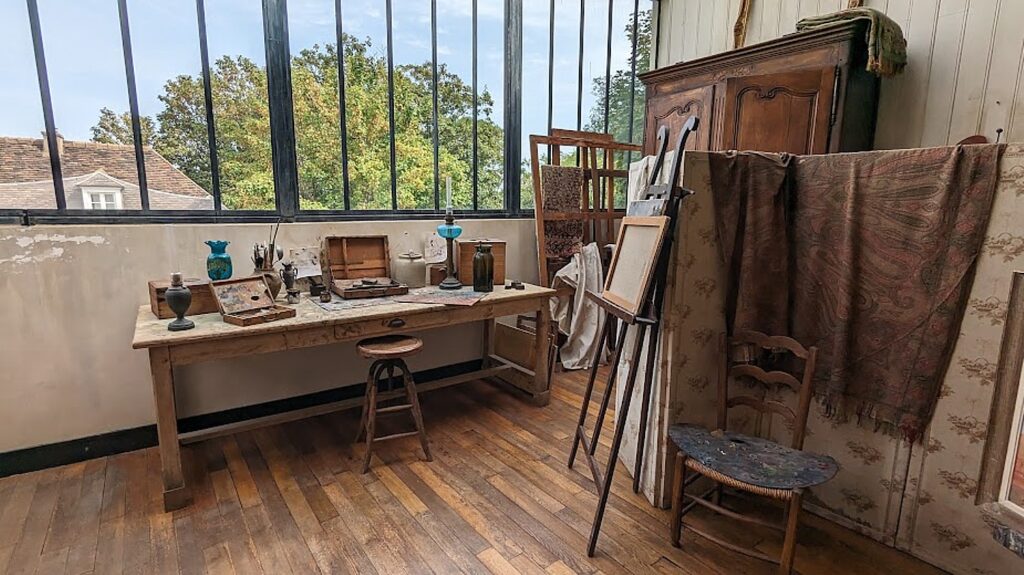
The permanent collections are enchanting – paintings, posters and drawings that give you a taste of the artistic effervescence of its workshops, and the atmosphere of its famous cabarets.
The permanent collection immerses you in the history of Montmartre. During the 19th century, Montmartre was in transition the mills and the vineyards slowly disappeared due to urbanization (sound familiar?). In 1860, Montmartre was annexed to the city of Paris. Artists started to move to Montmartre in 1870 (for cheap rent) and the cafes and cabarets multiplied in the 1880’s. Montmartre became known for its bohemian spirit, its creative energy, which resonates today. This place, 12 Cortot, offered artists studio space and several painted it.

The museum captures how Montmartre was hub for new cultural movement – art, music, dance, social mores.
There is also a modern museum with revolving exhibitions – during my visit, the extremely well done special exhibit showcased “Feminist Surealists”.
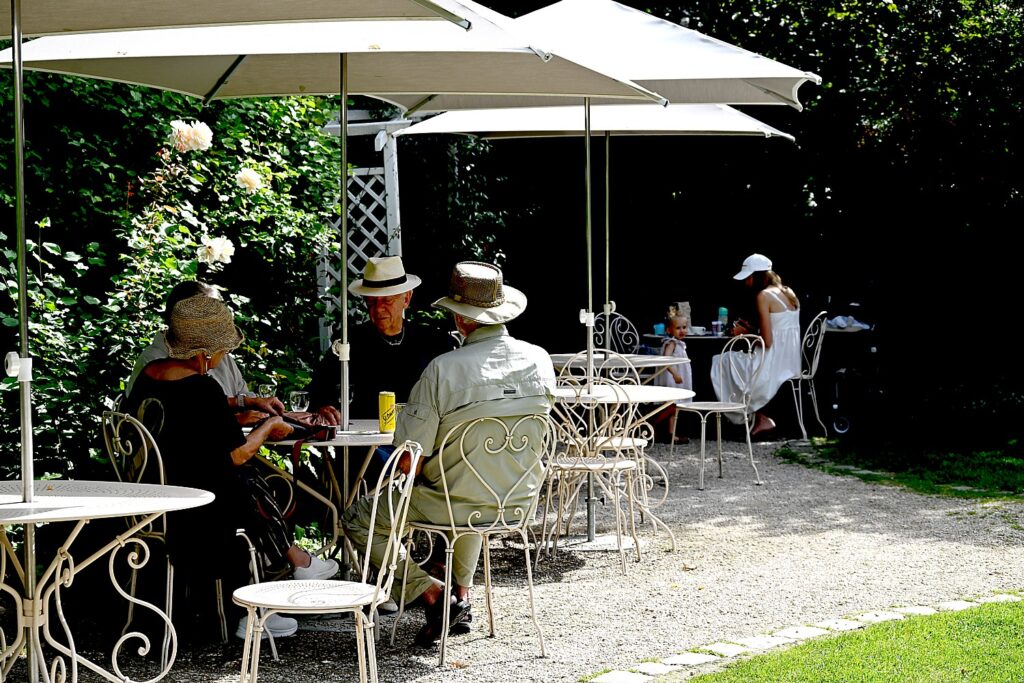
But the most special part of this place is the garden immortalized by Auguste Renoir in his paintings including La Balancoire (“The Swing”) – you can even see same swing hanging from a tree branch that he painted. The impressionist painter lived on this very site between 1875 and 1877m where he painted several masterpieces including the famous le Bal du Moulin de la Galette (“The Moulin de la Galette Ball”) and Jardin de la rue Cortot (“Rue Cortot Garden”). You easily see the scenes that he immortalized – there is even a lily pond.

This truly is like a Woody Allen “Midnight in Paris” moment where time has rolled back. An oasis of peace and tranquility, you can sit and enjoy refreshments from the Café Renoir and feel you have floated into Renoir’s canvas.
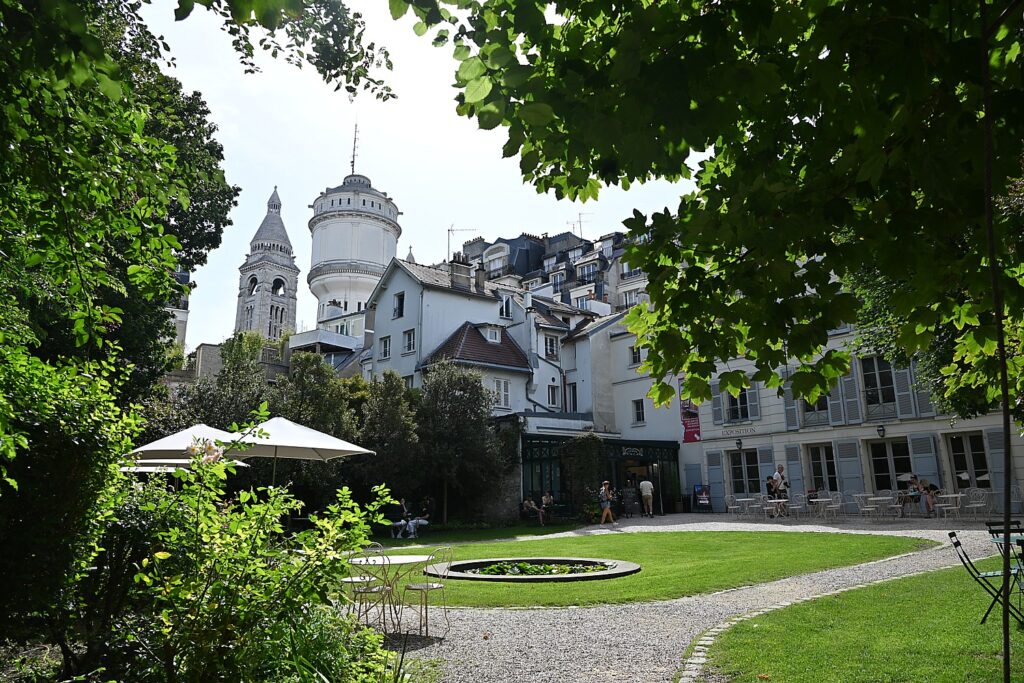
Here in the garden, you find Café Renoir, its glass roof decorated in the manner of a winter garden. The incredible peace of this place, where I enjoy lunch, is such a luxury, especially when you leave, walk the few steps toward the bustling Sacre-Coeur or Place du Tertre.

(You can visit the Gardens without visiting the Museum for E5, but that would be a mistake. The museum is exceptional.)
Musée de Montmartre, 12 Rue Cortot, 75018 Paris, Phone:+33 1 49 25 89 39, https://museedemontmartre.fr/en/musee-jardins/

The tranquility of the Museum, and the undeniable feeling of going back in time, is in contrast to the bustle and press of tourists that snap you back into the present day at Sacre-Coeur and Place du Tertre. But that is where I go next (how can you not?).
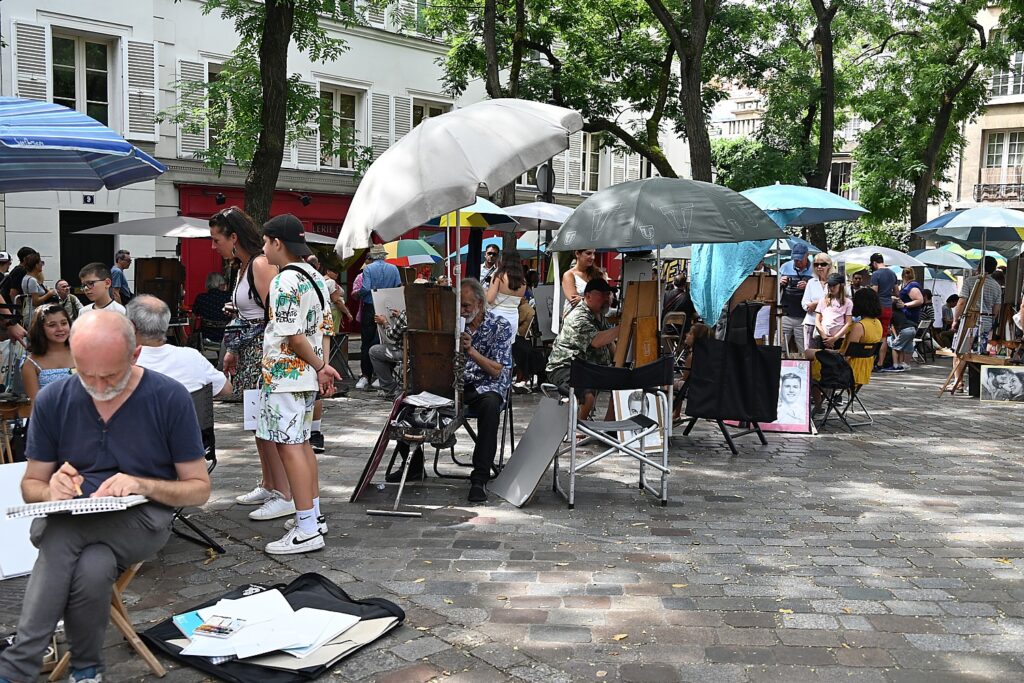
There are scores of artists, in the tradition of Montmartre trying to eke out a living, selling their paintings or drawing your portrait or caricature, piggybacking the romance attached to the 19th century artists.
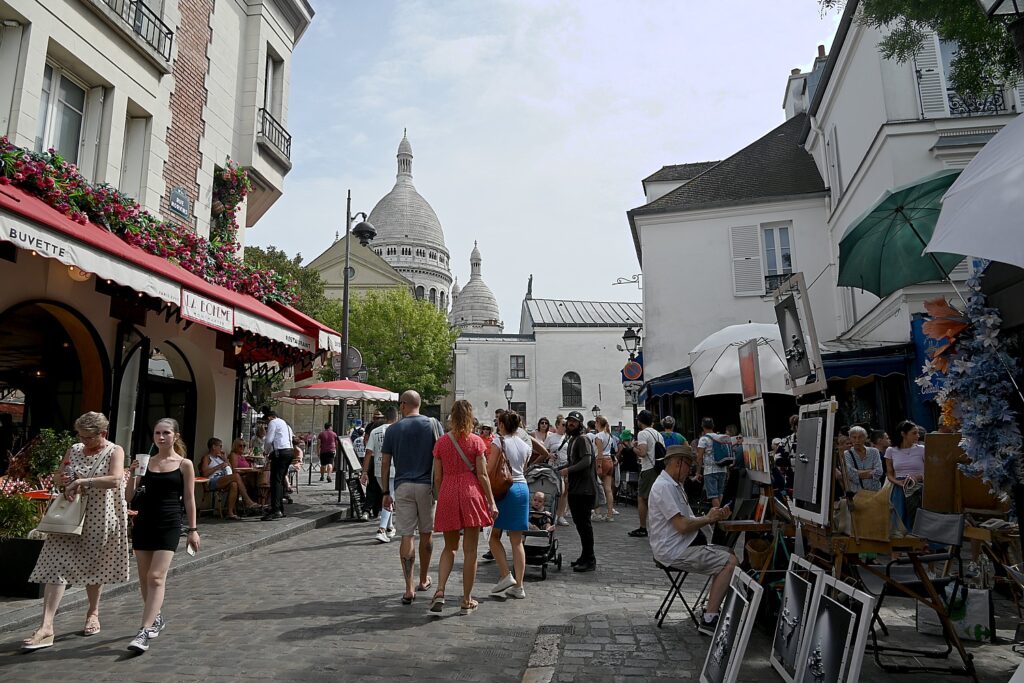
Following a narrow cobblestone street, I come to Dali Paris gallery at 11 rue Poulbot for a very quick look at Salvador Dali’s creations.
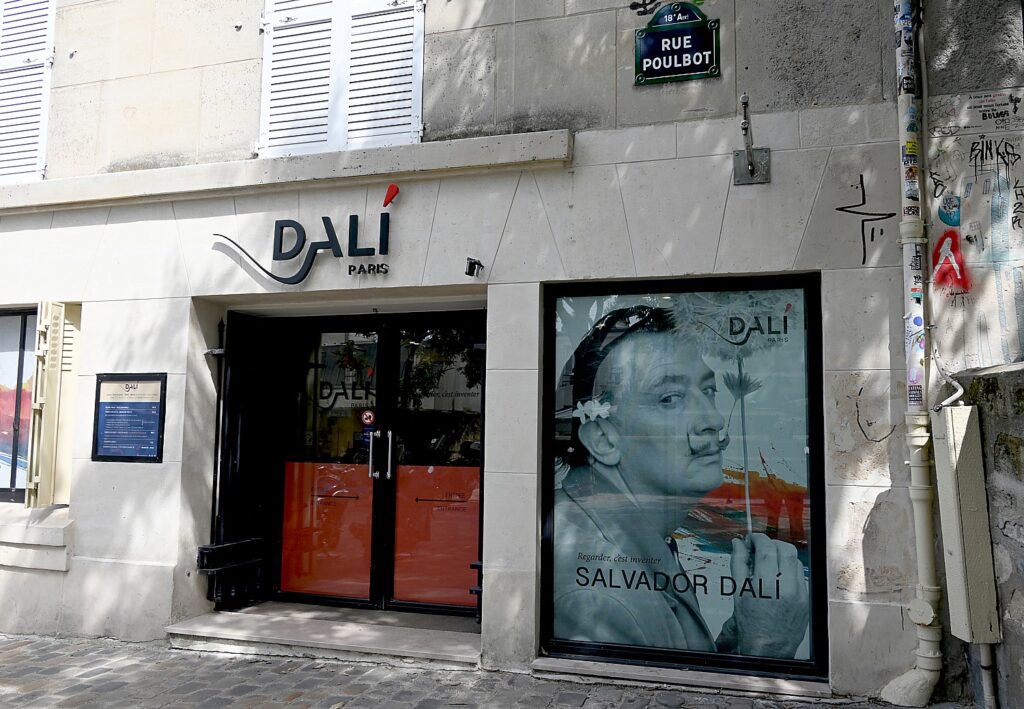
I miss out on seeing Le Bateau-Lavoir, a collection of small apartment buildings in Montmartre that served as the homes and studios of several artists, including Picasso, in the early 20th century.

Next, I go to marvel at the Sacré-Cœur Basilica, a masterpiece of grace and grandeur. Built at the end of the 19th century in the Romano-Byzantine style, it houses the largest mosaic in France, measuring at 480 sq. meters, and is still actively used as a place of worship.
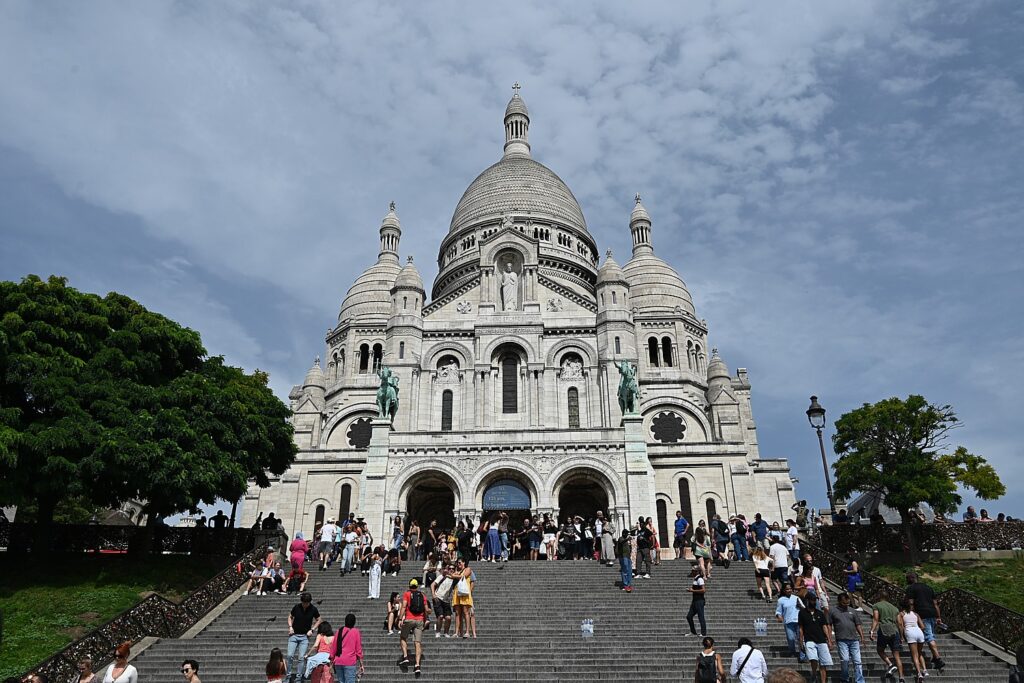
The forecourt of Sacre-Coeur (or if you are game, climb the 325 steps to the top of the majestic dome), provides an amazing view of Paris – which I note is like one of the paintings at the museum by Renaudin painted in 1899, depicting a landscape from this exact hilltop over Paris – how much has changed, and yet, the same. There is a continuity.
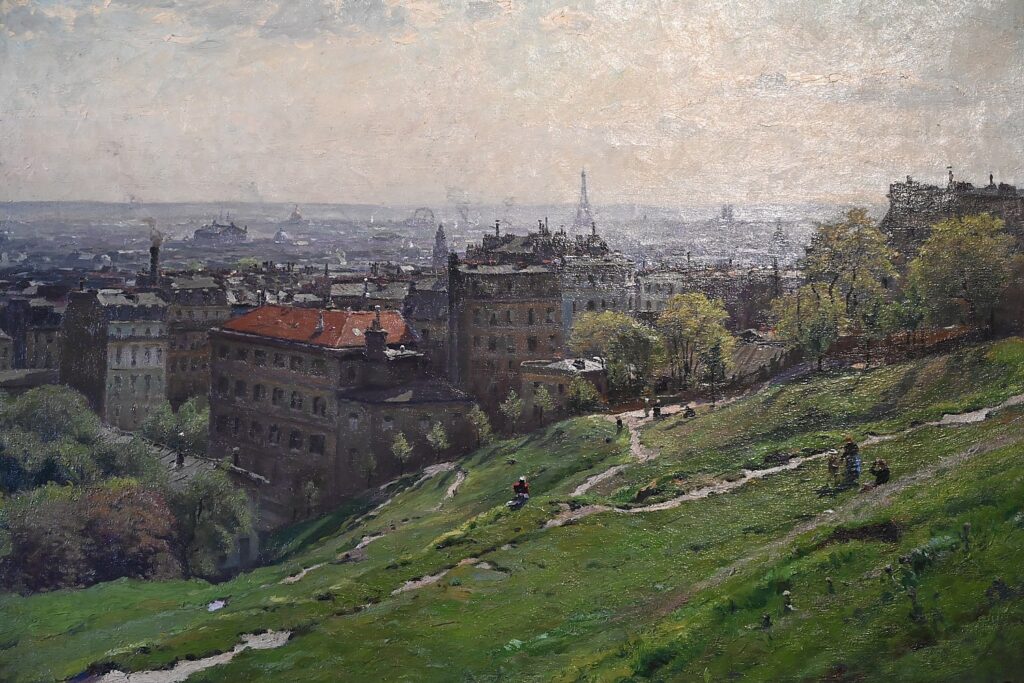
Had I been able to stay longer, I would have delighted to see the Moulin Rouge, perhaps the most famous cabaret on the planet. It first opened in 1889 for the same world’s fair that brought Paris the Eiffel Tower, and for more than 125 years, 7 days a week, audiences of 1,800 have the delight of seeing the 60 performers including the 40 Doriss Girls maintain this tradition. In its day, you might see artist Toulouse-Lautrec who found inspiration in the Moulin Rouge’s audiences as well as the performers, among them La Goulue, Jane Avril or Yvette Guilbert stars of the French music hall. (I had seen Toulouse-Lautrec’s posters and photos of the can-can dancers at the Museum.) The cabaret endeavors to preserve the style of the original creators of the Moulin Rouge, Joseph Oller and Charles Zidler, but still offer a modern take on the original music hall style. (Le Moulin Rouge, 82 Boulevard de Clichy 75018 Paris, https://www.moulinrouge.fr/en/)

I make it back to the hotel, Le 20 Prieure Hotel in the Marais district, at 3 pm (I left at 9:30 am), in time to pick up my bags and treat myself to an Uber (instead of two metros) to Charles de Gaulle Airport for my flight home.
Planning is crucial to fully enjoy your visit to Paris, especially this year, with the Olympics scheduled (July 26-August 11) and Paralympics (August 28-Sept. 8. Other events to keep in mind: Tour de France, from June 29 to July 21; and Tour de France Femmes, from August 12 to 18.
Tourists can buy a Paris 2024 transit pass costing €16 a day, or €70 per week, allowing travel across the Île-de-France region, including to and from Charles de Gaulle and Orly airports. And if you are planning to go to venues outside of Paris requiring train travel, book in advance (raileurope.com).
This avoids having to queue up at a ticket machine and being confused about what zone ticket to purchase. Go to the helpful visitor information center right when you land at Charles de Gaulle where you can purchase the ticket, and therefore avoid the first line at the airport machines. The airport has excellent train links to the city but also the TGV trains to other parts of France (check raileurope.com).
Many of the attractions I visit during my four-day stay are included in the Paris Museum Pass, http://en.parismuseumpass.com/ and Paris Pass (ParisPass.com), which also features experiences and attractions like the Seine bateaux mouches cruises.
More planning help from the Paris Tourist Office, https://parisjetaime.com/eng/. Online ticketing at https://parisjetaime.com/eng/tickets.
Olympic Venues
Be aware that Paris is abuzz with Olympics this summer (July 26-August 11), many of the venues will be in the center city – transportation will be affected (when I visited, the city was doing a drill on closing streets).
Much of the activity will be in the heart of the city itself, as well as throughout the Ile-de-France region. In all, there are 35 venues.
Many Paris iconic landmarks are being transformed into sporting arenas to offer spectators an unparalleled experience and provide an outstanding backdrop.

These include: the Eiffel Tower Stadium, Trocadéro, La Concorde Stadium, Hôtel de Ville, Alexandre III Bridge, Parc des Princes, Bercy Arena, South Paris Arena, Porte de La Chapelle Arena, Grand Palais, Champs de Mars Arena, Invalides, and Roland-Garros Stadium,
The Games will also take place throughout the Ile-de-France region, from Les Yvelines to Hauts-de-Seine, Seine-et-Marne and Seine-Saint-Denis. Seine-Saint-Denis will be home to the Olympic and Paralympic Village, the Media Village and six sports events. In addition, Seine-Saint-Denis is the venue for two Paralympic events – the Paralympic marathon and Paralympic road cycling.
Specific venues include: Le Bourget Sport climbing venue, Yves-du-Manoir Stadium, North Paris Arena, Stade de France, Aquatics Centre, Clichy-sous-Bois, Paris La Défense Arena in Nanterre, Château de Versailles, Vaires-sur-Marne Nautical Stadium, Saint-Quentin-en-Yvelines Velodrome, Saint-Quentin-en-Yvelines BMX stadium, Golf National, Elancourt Hill,
The Paris 2024 Games will extend to the whole of France, promoting the country’s rich and diverse heritage. The football (soccer) tournament will be played at six stadiums across France: Bordeaux, Nantes, Lyon, Saint-Etienne, Nice and Marseille. The handball’s final phases’ games will be played in Lille, while sailing will head to the Mediterranean, in Marseille. For the first time in history, the Games will even benefit overseas territories and their communities, with the Teahupo’o site in Tahiti to stage the Olympic surfing competition on one of the most beautiful waves in the world.
For Olympics planning (and where you can purchase tickets that become available), https://www.paris2024.org/en/
See also:
ROMANCE IS AT THE HEART OF THE HOTEL NAPOLEON IN PARIS, CITY OF LOVE
VISITING PARIS THIS YEAR? PLAN IN ADVANCE
4 DAYS IN PARIS: MUSEE D’ORSAY HIGHLIGHTS DAY 1
4 DAYS IN PARIS: LE LOUVRE HIGHLIGHTS DAY 2
4 DAYS IN PARIS: WANDERING THE MARAIS DISTRICT HIGHLIGHTS DAY 3
_______________________
© 2024 Travel Features Syndicate, a division of Workstyles, Inc. All rights reserved. Visit goingplacesfarandnear.com and travelwritersmagazine.com/TravelFeaturesSyndicate/. Blogging at goingplacesnearandfar.wordpress.com and moralcompasstravel.info. Visit instagram.com/going_places_far_and_near and instagram.com/bigbackpacktraveler/ Send comments or questions to FamTravLtr@aol.com. Tweet @TravelFeatures. ‘Like’ us at facebook.com/NewsPhotoFeatures

